Home> Company News> 6 Simple Ways To Increase Pressure At The Pump
- AddressNorth Tan Street, Jinan,Shandong
- Factory Address123 Ubi Ave 3 #12-30 Frontier Singapore 408867
- Worktime9:00-18:00(Beijing time)
- Phone(Working Time)86 0531-8299 9952
Understanding the importance of proper pump pressure
Proper pump pressure is critical for the optimal performance and longevity of hydraulic systems. Hydraulic pumps are responsible for generating the necessary force to power hydraulic systems, which operate heavy machinery and equipment across various industries. The pressure produced by the pump is essential for moving hydraulic fluid through the system and transferring energy to the machine components.
Insufficient pump pressure can lead to a host of issues, including sluggish operation, reduced productivity, and even damage to system components. This is why maintaining optimal pump pressure is essential for the smooth functioning of hydraulic systems.
The benefits of optimal pump pressure go beyond simply preventing issues. Proper pump pressure can lead to improved energy efficiency, as the system will require less energy to perform the same amount of work. It can also improve system response time, allowing for faster operation and increased productivity.
On the other hand, excessive pump pressure can also be problematic. It can cause unnecessary wear and tear on system components, leading to premature failure and increased maintenance costs. It is therefore important to ensure that pump pressure is adjusted to the optimal level for the specific system and its components.
In the following sections, we will discuss various methods for adjusting and maintaining proper pump pressure, including using a pressure relief valve, upgrading pump components, and utilizing additional pumps in parallel.
Adjusting pump pressure using a pressure relief valve
One of the most common ways to adjust pump pressure in a hydraulic system is by using a pressure relief valve. The relief valve is designed to open and release excess pressure in the system, ensuring that the pressure does not rise above a predetermined level. By adjusting the relief valve, you can control the maximum pressure level in the system and ensure that it is within the appropriate range.
To adjust pump pressure using a pressure relief valve, you need to follow a few simple steps. First, you need to locate the relief valve in the hydraulic system. The relief valve is typically located on the pump or in the pressure line, and it is usually identifiable by a small adjustment screw or knob.
Once you have located the relief valve, you need to adjust it to the desired pressure level. To do this, you should turn the adjustment screw or knob clockwise to increase the pressure setting and counterclockwise to decrease the pressure setting. As you make adjustments, it is important to monitor the pressure gauge to ensure that the pressure remains within the appropriate range.
When adjusting the relief valve, there are some important considerations and precautions that you should keep in mind. First, you should never set the relief valve to a pressure level higher than the maximum pressure rating of the hydraulic system. Doing so can cause serious damage to the system and even result in system failure.
Additionally, you should be aware that adjusting the relief valve can affect the overall performance of the hydraulic system. Changing the pressure level can impact the flow rate and velocity of the fluid in the system, and it may also affect the response time of the system. As such, it is important to carefully monitor the system after making adjustments to ensure that it is operating as intended.
Overall, adjusting pump pressure using a pressure relief valve is a simple and effective way to ensure that a hydraulic system is operating at optimal pressure levels. However, it is important to exercise caution and follow best practices when making adjustments to ensure the safety and reliability of the system.
Upgrading pump components for higher pressure
In some cases, it may be necessary to upgrade certain pump components to achieve higher pressure levels. This is especially true if the system was not designed to handle high pressures or if the components are worn or damaged.
The first step in upgrading pump components is to identify which parts may be limiting the pump pressure. This can be done through a thorough inspection of the system and its components. Some common components that may need upgrading include:
-
Pump shaft: If the pump shaft is damaged or worn, it can affect the pump's ability to generate pressure. Upgrading to a stronger shaft can help improve pump performance.
-
Pump seals: The seals in the pump can wear over time, leading to leaks and decreased pressure. Upgrading to high-quality seals can help prevent these issues.
-
Relief valve: The relief valve is responsible for controlling the pump pressure. If the relief valve is not functioning properly, it can limit the pump's ability to generate high pressures. Upgrading to a more robust relief valve can help increase the pump's pressure capacity.
-
Cylinder: If the cylinder is damaged or worn, it can limit the pump's ability to generate pressure. Upgrading to a stronger cylinder can help improve pump performance.
-
Hydraulic hoses: If the hydraulic hoses are too small or worn, they can limit the pump's ability to generate pressure. Upgrading to larger or higher-quality hoses can help prevent this issue.
It's important to note that upgrading pump components can be costly, and it may not always be necessary. Before deciding to upgrade components, it's important to consider the cost-benefit ratio and whether the benefits outweigh the cost. In some cases, it may be more cost-effective to replace the entire pump or system.
Furthermore, upgrading pump components requires proper knowledge and skill, and it's important to consult with a qualified hydraulic technician or engineer before making any changes to the system.
Increasing pump pressure with a variable displacement pump
Hydraulic systems rely heavily on pump pressure to function properly. Without adequate pressure, the system may experience sluggish performance, poor efficiency, and other issues. One way to increase pump pressure is by using a variable displacement pump.
Variable displacement pumps are designed to adjust their displacement and therefore their output to meet the system's demands. They have a wider range of pressure and flow rate settings, making them ideal for use in hydraulic systems that require precise control. These pumps can provide the necessary pressure without causing undue strain on the system, ensuring that it functions at peak performance.
To increase pump pressure using a variable displacement pump, the pump's displacement can be increased. This is achieved by adjusting the swash plate angle, which controls the pump's output. By changing the angle of the swash plate, the pump's displacement changes, thereby increasing the output pressure.
It is important to note that increasing pump pressure with a variable displacement pump must be done carefully and with consideration for the system's design parameters. Overloading the system with excessive pressure can damage system components and cause safety issues. Therefore, it is important to consult the manufacturer's specifications and guidelines before adjusting the pump's settings.
Variable displacement pumps also come with other considerations when it comes to increasing pump pressure. For instance, the pump's flow rate and output pressure are not independent variables. Therefore, if one is increased, the other will be decreased. It is important to understand the impact of these interrelated variables and make adjustments accordingly.
Overall, variable displacement pumps provide a flexible and precise way to increase pump pressure in hydraulic systems. However, it is important to approach this method with caution and follow manufacturer guidelines to prevent system damage or safety hazards.
Maintaining proper pump pressure
Proper maintenance is essential for ensuring optimal pump pressure and preventing issues that may arise due to decreased pump pressure. Regular maintenance can help identify potential issues before they become major problems and ensure that the system is operating efficiently.
One common cause of decreased pump pressure is clogged or dirty filters. Hydraulic systems rely on clean fluid to operate properly, and filters play a crucial role in removing debris and contaminants from the fluid. Over time, filters can become clogged with debris, reducing the flow of fluid and causing a drop in pump pressure. Regularly inspecting and replacing filters can help prevent this issue.
Another potential cause of decreased pump pressure is worn or damaged pump components. Over time, pump components can become worn or damaged, leading to leaks and other issues that can reduce pump pressure. Regularly inspecting and replacing worn or damaged components can help maintain proper pump pressure and prevent system damage.
In addition to regular maintenance, it is important to promptly address any issues that arise. If pump pressure drops unexpectedly, it is important to troubleshoot the issue and determine the cause. Ignoring pressure issues can lead to system damage and downtime, which can be costly for businesses.
Steps for troubleshooting and fixing pressure issues may include inspecting components for damage, checking fluid levels and quality, and adjusting pump pressure using a pressure relief valve or other methods. In some cases, it may be necessary to replace worn or damaged components or upgrade to a higher pressure system.
Proper maintenance and prompt troubleshooting are essential for maintaining proper pump pressure and preventing issues that can arise due to decreased pressure. By taking these steps, businesses can ensure that their hydraulic systems operate efficiently and reliably, maximizing productivity and minimizing downtime.
Using additional pumps in parallel
In some cases, it may be necessary to increase pump pressure beyond the capabilities of a single pump. One solution is to use multiple pumps in parallel to achieve higher pressure levels.
The concept of pump parallelization
Parallelization involves connecting two or more pumps in a hydraulic system so that they work together to achieve a common goal. When pumps are connected in parallel, their output flow rates are combined, while the pressure output is maintained at the same level as each individual pump.
Steps for adding pumps in parallel to increase pressure
To add pumps in parallel to increase pressure, follow these steps:
- Determine the required pressure and flow rate for the hydraulic system.
- Select pumps with the required flow rate and pressure rating.
- Install each pump with a separate relief valve to ensure that each pump operates at the same pressure.
- Connect the pumps in parallel using appropriate fittings and hoses.
- Install a check valve on each pump's outlet to prevent reverse flow.
- Install a pressure gauge to monitor the pressure output of the combined pumps.
Considerations and potential issues with parallel pump usage
While parallel pump usage can provide increased pressure and flow rate, there are several considerations and potential issues to keep in mind:
- Pumps in parallel should have the same flow rate and pressure rating to ensure optimal operation.
- Inlet lines and outlet lines for each pump should be the same length and diameter to ensure equal flow to each pump.
- The total system flow rate should not exceed the maximum flow rate of the hydraulic reservoir.
- If one pump fails, the other pumps must be able to handle the entire system load, otherwise system failure can occur.
- Parallel pump usage can increase system complexity and maintenance requirements.
Overall, the use of multiple pumps in parallel can be an effective solution for increasing hydraulic system pressure and flow rate. However, careful consideration must be taken to ensure proper installation, operation, and maintenance of the pumps to avoid potential issues and system failures.


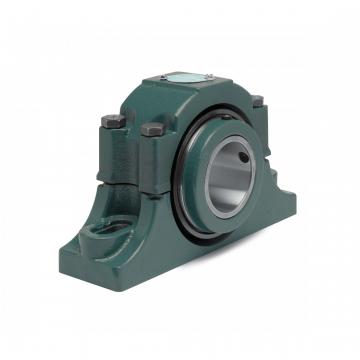 Mounted Tapered Roller Bearings P4B-EXL-212RE
Mounted Tapered Roller Bearings P4B-EXL-212RE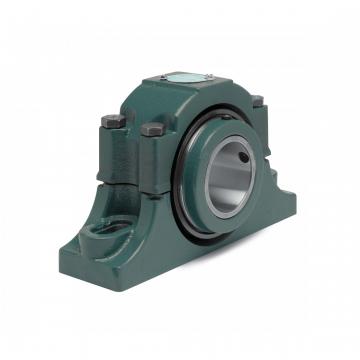 Mounted Tapered Roller Bearings P4B-EXL-400R
Mounted Tapered Roller Bearings P4B-EXL-400R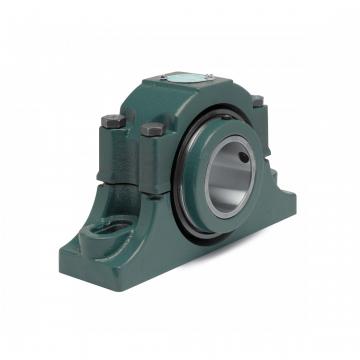 Mounted Tapered Roller Bearings P4B-EXL-400RE
Mounted Tapered Roller Bearings P4B-EXL-400RE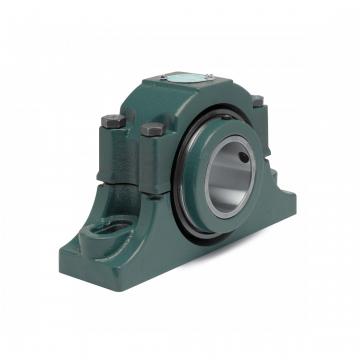 Mounted Tapered Roller Bearings P4B-EXL-315RE
Mounted Tapered Roller Bearings P4B-EXL-315RE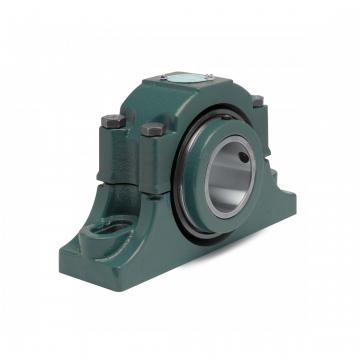 Mounted Tapered Roller Bearings P4B-EXL-207RE
Mounted Tapered Roller Bearings P4B-EXL-207RE